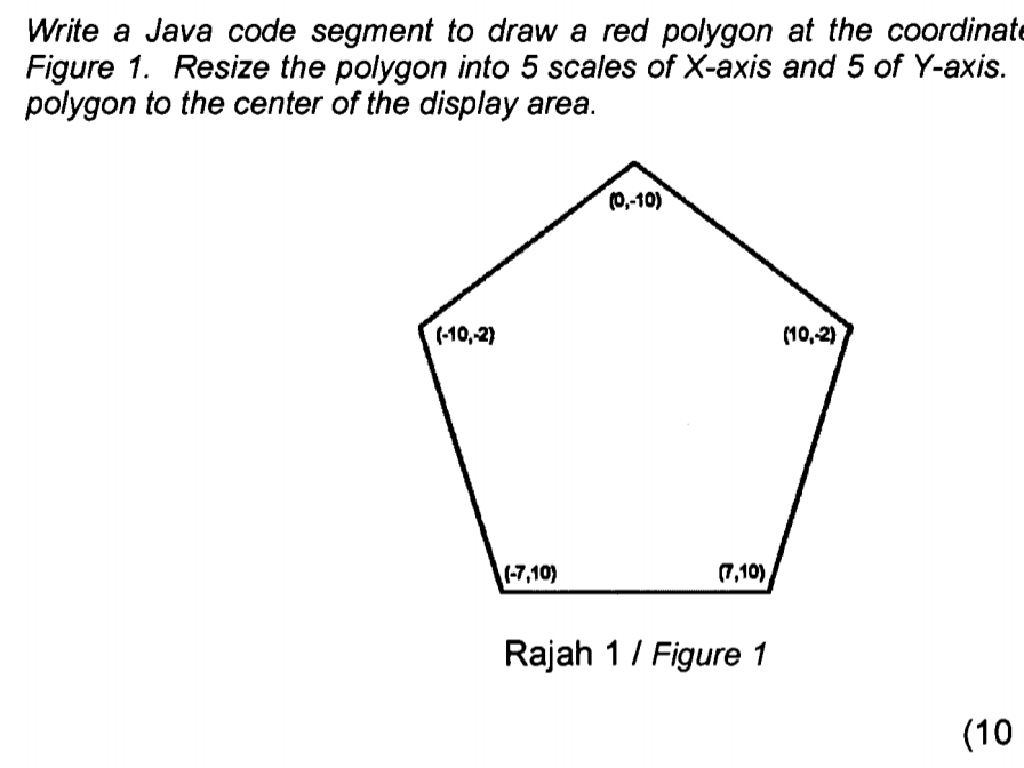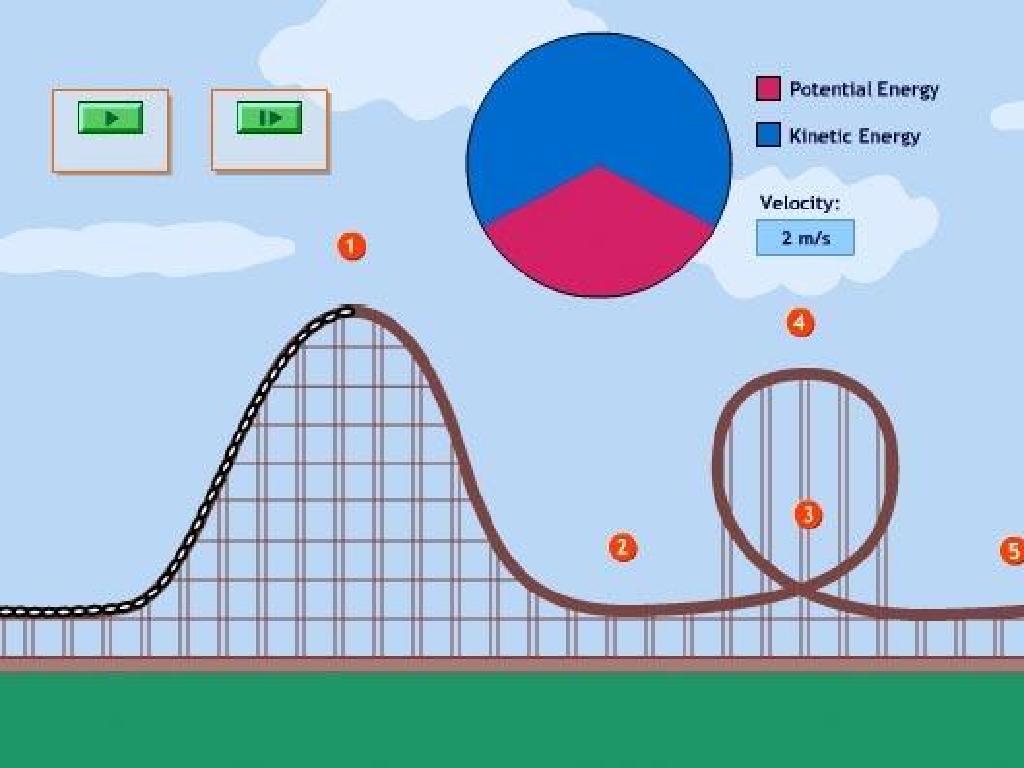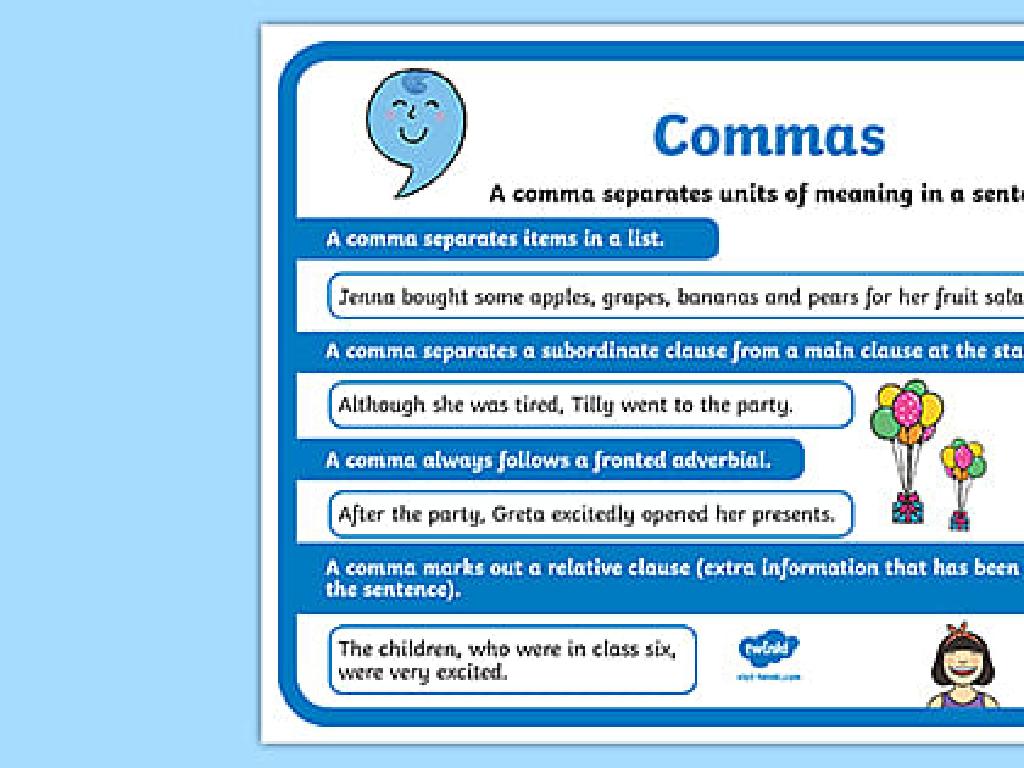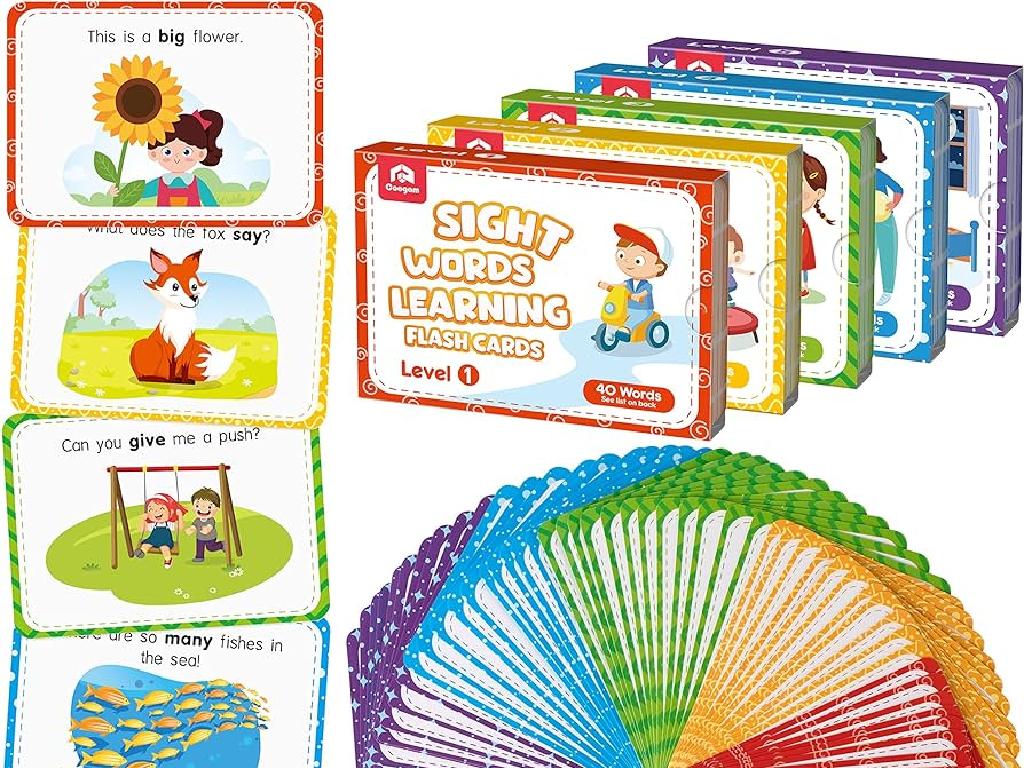Multiply Fractions By Whole Numbers Using Models
Subject: Math
Grade: Fourth grade
Topic: Multiply Fractions And Whole Numbers
Please LOG IN to download the presentation. Access is available to registered users only.
View More Content
Multiplying Fractions by Whole Numbers
– Understand fractions & whole numbers
– Fractions represent parts of a whole, while whole numbers count exact amounts.
– How multiplication combines both
– Multiplying a fraction by a whole number combines parts to make more wholes.
– Real-life examples of multiplication
– Examples: Cutting a cake into fractions or buying multiple half-gallon milk cartons.
– Practice with models
|
Begin by reviewing the concept of fractions as parts of a whole and whole numbers as complete units. Explain how multiplication is essentially repeated addition, which can be applied to combine fractions and whole numbers. Use tangible examples like slicing a cake into fractions and then multiplying those fractions if more than one cake is needed, or considering the purchase of several half-gallon milk cartons to find out the total amount of milk. Introduce models such as fraction circles or bars to visually demonstrate the concept. Encourage students to visualize the process with these models to solidify their understanding. Prepare to guide them through practice problems where they can apply this knowledge.
Visualizing Fractions
– Understanding a fraction
– A fraction represents a part of a whole
– Numerator and denominator roles
– Top number (numerator) is the part, bottom number (denominator) is the whole
– Pie models show fractions
– Imagine a pie cut into equal slices, each slice is a fraction of the pie
– Practice with pie model fractions
– Draw a pie model and shade parts to represent different fractions
|
This slide introduces the concept of fractions to fourth-grade students, emphasizing the parts of a fraction: the numerator and the denominator. Use pie models to visually represent fractions, as this helps students better understand the concept of a part of a whole. Encourage students to draw their own pie models and practice shading in the correct number of slices to match given fractions. This visual approach lays the groundwork for understanding how to multiply fractions by whole numbers, as it allows students to see the fractions before dealing with more abstract calculations.
Understanding Whole Numbers
– Define a whole number
Whole numbers are numbers without fractions or decimals.
– Counting using whole numbers
We use whole numbers to count objects, like 1, 2, 3 apples.
– Whole numbers in daily life
Money, scoreboards, and calendars use whole numbers.
– Practice with examples
|
This slide introduces the concept of whole numbers, which are the basic building blocks in mathematics, especially important for understanding how to multiply fractions by whole numbers. Whole numbers are the numbers we use in everyday counting and do not include fractions or decimals. Examples include counting items, like pencils or books, and recognizing whole numbers in real-life contexts such as money (dollars, not cents), sports scores, or dates on a calendar. Encourage students to think of other examples where they encounter whole numbers daily. The slide sets the stage for further exploration into using these whole numbers when multiplying with fractions.
Multiplying Fractions by Whole Numbers
– Multiply fraction by a whole number
– Multiply the numerator by the whole number
– Use models for multiplication
– Visual aids like fraction bars or circles
– Example: 1/2 multiplied by 3
– 1/2 x 3 = 3/2 or 1 and 1/2
|
This slide introduces the concept of multiplying fractions by whole numbers. Start by explaining that to multiply a fraction by a whole number, you multiply the numerator (top number) by the whole number and keep the same denominator (bottom number). Use visual models such as fraction bars or circles to illustrate this concept, as visual aids are particularly effective for fourth graders. For example, show how multiplying 1/2 by 3 can be visualized by shading in three halves on a fraction model, resulting in 3/2, which is also equal to 1 and 1/2. This helps students understand the concept in a concrete way before moving on to more abstract representations.
Using Models to Multiply Fractions by Whole Numbers
– Understanding fraction bars
– Fraction bars represent fractions visually
– Demonstration using fraction bars
– Watch how to multiply a fraction by a whole number
– Group activity with fraction bars
– Create your own models to solve problems
– Discussing our findings
– Share and explain your models with the class
|
This slide introduces the concept of using fraction bars to multiply fractions by whole numbers. Begin by explaining what fraction bars are and how they can be used as a visual tool to represent fractions. Demonstrate the process of multiplying a fraction by a whole number using fraction bars, ensuring to walk through each step clearly. For the group activity, provide students with materials to create their own fraction bar models and encourage them to solve multiplication problems in groups. After the activity, have a discussion where students can present their models and explain their thought process. This will help solidify their understanding and allow for peer learning. Prepare to assist students who may struggle with the concept and have additional examples ready for further clarification.
Multiplying Fractions by Whole Numbers: Practice
– Solve problems as a group
– Apply learning to new problems
– Use models to multiply fractions like 1/2 x 4
– Discuss solutions with peers
– Share thoughts on different solving methods
– Collaborative problem-solving
– Work in pairs or small groups to tackle problems
|
This slide is focused on interactive practice problems to reinforce the concept of multiplying fractions by whole numbers. Start with a group problem-solving session to engage the whole class, then move on to individual practice where students apply what they’ve learned to new examples. Encourage students to discuss their problem-solving strategies with their peers, fostering a collaborative learning environment. Provide guidance and support as needed, and consider using manipulatives or visual aids to help students visualize the multiplication process. Possible activities include using fraction circles, drawing models, or creating real-life scenarios that involve multiplying fractions by whole numbers.
Class Activity: Fraction Multiplication Art
– Create art with fraction multiplication
– Receive a number to multiply your fraction
– Visualize results through your art
– Use colors/shapes to show fraction multiplication
– Display art to see different fractions
|
In this engaging class activity, students will apply their understanding of multiplying fractions by whole numbers to create a unique piece of art. Each student will be given a whole number and a fraction, and they will multiply the two to determine how much of their art will be covered by a certain color or shape. For example, if a student has the fraction 1/4 and the number 3, they will use three-fourths of their art space to represent this multiplication. This visual representation helps solidify the concept of fraction multiplication. Teachers should prepare different whole numbers and fractions for each student and ensure there are enough art supplies. Possible variations of the activity could include creating fraction murals, designing fraction quilts, or assembling fraction collages. The goal is to make learning fractions tangible and fun.
Conclusion: Multiplying Fractions by Whole Numbers
– Recap: Multiplying fractions by whole numbers
– Remember, multiply the numerator by the whole number
– Review: Models used in today’s lesson
– Visual models like fraction circles or bars
– Q&A session for doubts
– Ask any questions you have, no question is too small!
– Practice problems for mastery
– Solve a few problems together to become confident
|
As we wrap up today’s lesson, we’ll revisit the key concept of multiplying fractions by whole numbers. Emphasize the step of multiplying the numerator by the whole number and keeping the denominator the same. Review the models used, such as fraction circles or bars, to visually represent this multiplication process. Open the floor for a Q&A session, encouraging students to ask questions to clear up any confusion. Conclude with a set of practice problems to ensure students feel comfortable with the material. This will help solidify their understanding and give them the confidence to tackle similar problems in the future.






